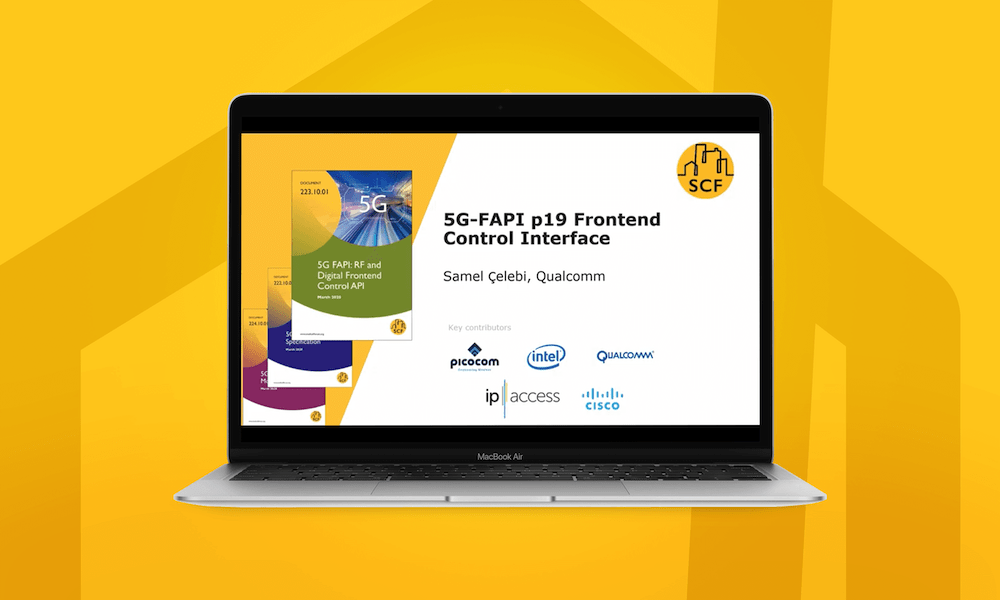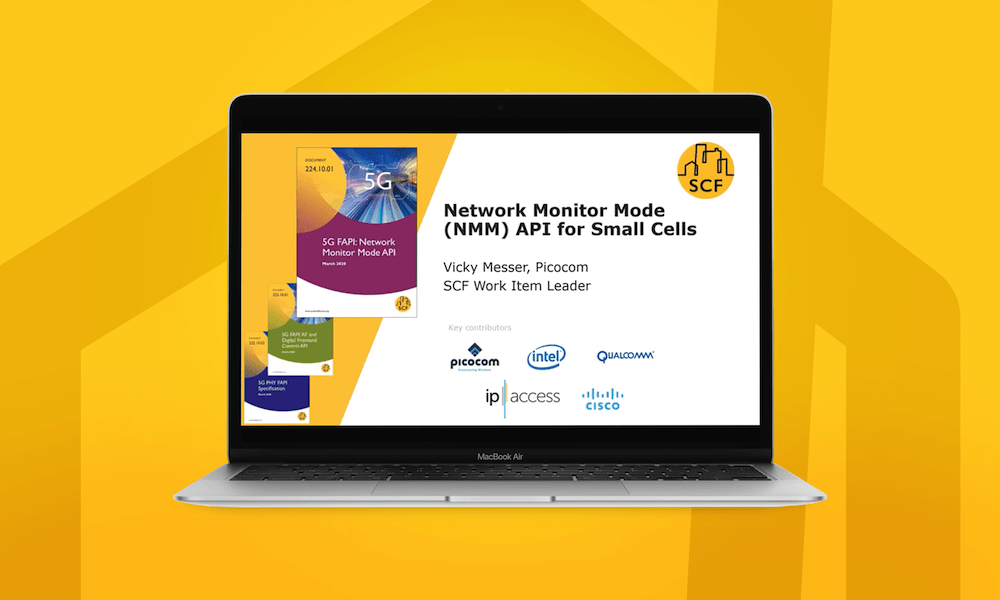The 5G FAPI Suite
Small Cell Forum has released three new specifications within its landmark family of common interfaces, 5G FAPI.
The new documents include a fully updated release of the 5G PHY API, as well as APIs for RF and digital front end control, and for network monitor mode.
Together, these provide a robust set of application programming interfaces to enable fully open, multivendor 5G small cell designs down to chip level. Openness at this level is essential as it provides the foundation for a broad ecosystem of interoperable components and products. That, in turn, provides operators with access to maximum levels of innovation, vendor choice and cost efficiency.

Driving open interfaces from chip to network to applications layers has been at the heart of SCF’s work since its formation. The 3G and 4G FAPI specs have been widely deployed, and open architectures like this will be even more critical in 5G, which will support an unprecedented level of density, which will only be practical with cost efficiency and open interoperability.
The latest FAPI specifications are the result of intensive cooperation between SCF members from across the ecosystem. They provide common logical interfaces for the main components of a 5G small cell, namely:
- 5G implementation of PHY-API, which aligns to 3GPP P5 and P7 interfaces (the PHY links the radio channel to the MAC, which then supports functions like error correction and scheduling).
- the RF and digital front end control interface (3GPP P19), including 5G enhancements to support tight timing requirements imposed by the use of millimeter wave spectrum.
- the network monitor/listen mode API (3GPP P4).

5G FAPI: PHY API Specification
The functional application platform interface (FAPI) is an initiative within the small cell industry released by the Small Cell Forum, which establishes interoperability and innovation among suppliers of platform hardware, platform software and application software by providing a common API around which suppliers can create a competitive ecosystem.
Download now
5G FAPI: RF and Digital Frontend Control API
The functional application platform interface (FAPI) is an initiative within the small cell industry released by the Small Cell Forum, which establishes interoperability and innovation among suppliers of platform hardware, platform software and application software by providing a common API around which suppliers can create a competitive ecosystem.
Download now
5G FAPI: Network Monitor Mode API
The functional application platform interface (FAPI) is an initiative within the small cell industry released by the Small Cell Forum, which establishes interoperability and innovation among suppliers of platform hardware, platform software and application software by providing a common API around which suppliers can create a competitive ecosystem.
Download now5G PHY API for Small Cells
Listen to Clare Somerville’s (5G FAPI Lead & Intel) presentation on 5G PHY API for small cells, presented at Small Cells World Summit 2019.
The innovation of PHY API
Clare Somerville talks about the history of FAPI, how it was adopted as an industry standard and the role it will play in delivering 5G.
5G-FAPI p19 Frontend Control Interface
Listen to Samel Celebi (Qualcomm) giving an overview of Small Cell Forum’s P19 Frontend Control Interface.
Network Monitor Mode (NMM) API for Small Cells
Vicky Messer of Picocom outlines the Network Monitor Mode API for Small Cells, which adds the 5G capability to the existing 4G, 3G and 2G radio environment monitoring capability.
Contributors







